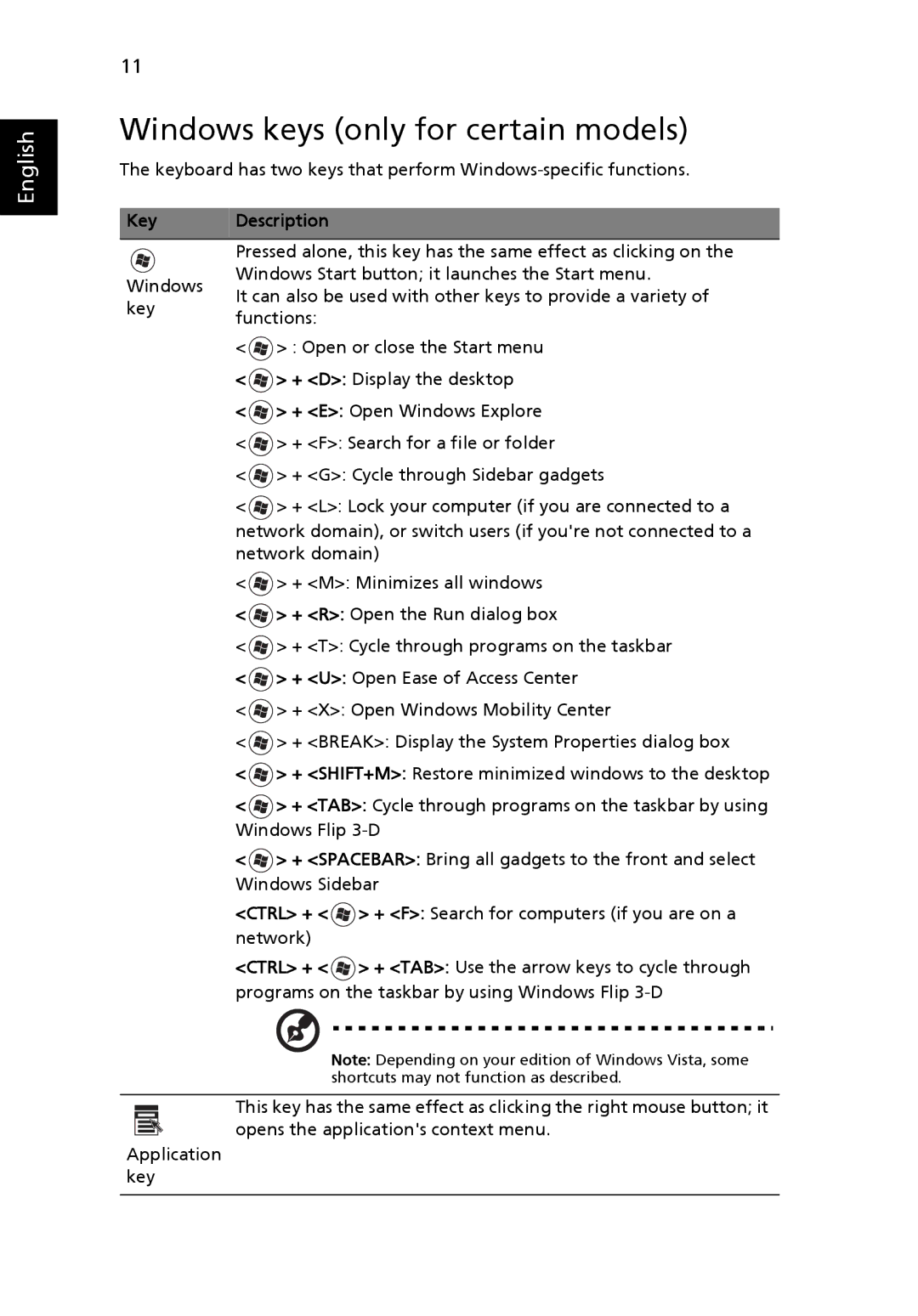
English
11
Windows keys (only for certain models)
The keyboard has two keys that perform
Key | Description | |
| Pressed alone, this key has the same effect as clicking on the | |
Windows | Windows Start button; it launches the Start menu. | |
It can also be used with other keys to provide a variety of | ||
key | ||
functions: | ||
|
< ![]() > : Open or close the Start menu
> : Open or close the Start menu
< ![]() > + <D>: Display the desktop
> + <D>: Display the desktop
< ![]() > + <E>: Open Windows Explore
> + <E>: Open Windows Explore
< ![]() > + <F>: Search for a file or folder
> + <F>: Search for a file or folder
< ![]() > + <G>: Cycle through Sidebar gadgets
> + <G>: Cycle through Sidebar gadgets
< ![]() > + <L>: Lock your computer (if you are connected to a
> + <L>: Lock your computer (if you are connected to a
network domain), or switch users (if you're not connected to a network domain)
< ![]() > + <M>: Minimizes all windows
> + <M>: Minimizes all windows
< ![]() > + <R>: Open the Run dialog box
> + <R>: Open the Run dialog box
< ![]() > + <T>: Cycle through programs on the taskbar
> + <T>: Cycle through programs on the taskbar
< ![]() > + <U>: Open Ease of Access Center
> + <U>: Open Ease of Access Center
< ![]() > + <X>: Open Windows Mobility Center
> + <X>: Open Windows Mobility Center
< ![]() > + <BREAK>: Display the System Properties dialog box
> + <BREAK>: Display the System Properties dialog box
< ![]() > + <SHIFT+M>: Restore minimized windows to the desktop
> + <SHIFT+M>: Restore minimized windows to the desktop
< ![]() > + <TAB>: Cycle through programs on the taskbar by using Windows Flip
> + <TAB>: Cycle through programs on the taskbar by using Windows Flip
< ![]() > + <SPACEBAR>: Bring all gadgets to the front and select Windows Sidebar
> + <SPACEBAR>: Bring all gadgets to the front and select Windows Sidebar
<CTRL> + < ![]() > + <F>: Search for computers (if you are on a network)
> + <F>: Search for computers (if you are on a network)
<CTRL> + < ![]() > + <TAB>: Use the arrow keys to cycle through programs on the taskbar by using Windows Flip
> + <TAB>: Use the arrow keys to cycle through programs on the taskbar by using Windows Flip
Note: Depending on your edition of Windows Vista, some shortcuts may not function as described.
This key has the same effect as clicking the right mouse button; it
![]() opens the application's context menu. Application
opens the application's context menu. Application
key
